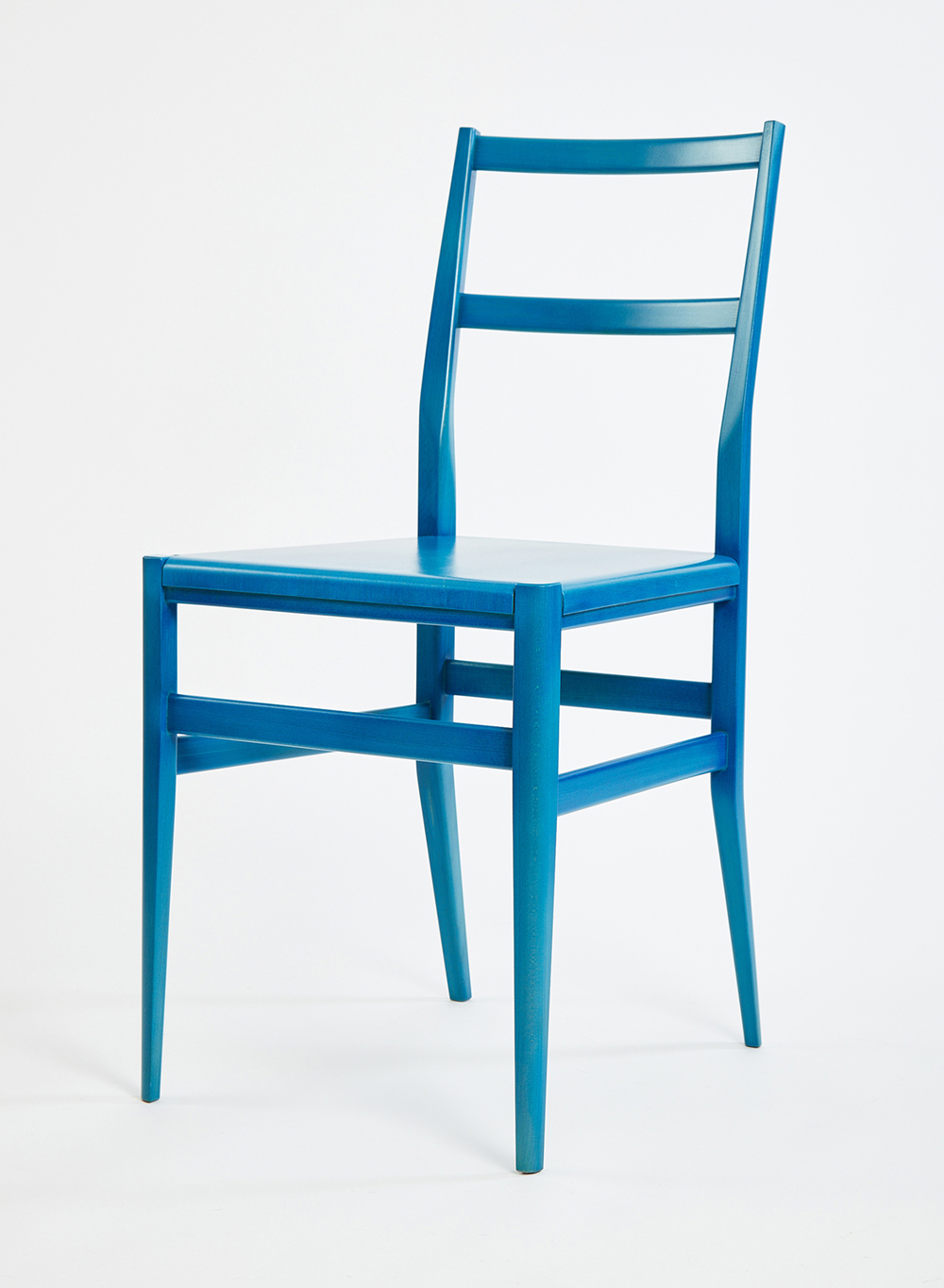Designer Lothar Windels Creates a Gravity-Defying Chair from Steinway Drop-Offs and Offers a Statement on Sustainability
Sixty-five years ago, Italian designer Gio Ponti unveiled a remarkable chair concept—an elegantly slender blend of solidity and lightness weighing less than four pounds. The chair, which has been continuously manufactured by Cassina since 1957 and can be lifted with a finger, was dubbed Superleggera, Italian for “super light.” Now, German-born designer and Rhode Island School of Design professor Lothar Windels has reimagined Ponti’s legendary chair using wood from an unusual source—the Steinway & Sons reject pile.
Windels’ concept chair had its inception a decade ago, during a visit Windels made to Steinway & Sons’ New York City headquarters with a group of his design students from RISD. The goal was for the students to envision and design their own version of a Steinway Limited Edition grand piano. While touring the historic factory, Windels was struck with the exceptional quality woods used in Steinway manufacturing. The Sitka spruce in particular—used for Steinway soundboards—caught his eye.
Sitka spruce is renowned for its strength-to-weight ratio, which makes it a natural choice for a piano’s structural cross braces. Sitka spruce also features long, parallel fibers that make the wood perfect for the soundboard’s chore of amplifying the vibrations of the strings and projecting the piano’s sound. Thus, all Steinway soundboards are constructed from solid Sitka spruce.
 But the spruce selections for soundboard manufacturing at Steinway & Sons must be perfect, explains Steinway Director of Operations Kyle Walters. “Our pianos need wood that meets the absolute highest specifications,” he said. “Any piece of spruce that has the slightest defect or flaw is immediately rejected.”Windels saw an opportunity for upcycling the exquisite spruce he saw passed over. “In my work, I’ve been becoming increasingly aware of waste streams,” said Windels, who also recently applied for a patent for a natural biodegradable plastic bonded with a natural resin adhesive. “While at the factory, the students and I learned that fifty percent of the Sitka spruce in the Steinway lumberyard will never make it into a piano. I saw this beautiful wood going unused and started thinking about a project that would stand on its own as a work of art and also demonstrate that waste streams like these can be reduced.”
But the spruce selections for soundboard manufacturing at Steinway & Sons must be perfect, explains Steinway Director of Operations Kyle Walters. “Our pianos need wood that meets the absolute highest specifications,” he said. “Any piece of spruce that has the slightest defect or flaw is immediately rejected.”Windels saw an opportunity for upcycling the exquisite spruce he saw passed over. “In my work, I’ve been becoming increasingly aware of waste streams,” said Windels, who also recently applied for a patent for a natural biodegradable plastic bonded with a natural resin adhesive. “While at the factory, the students and I learned that fifty percent of the Sitka spruce in the Steinway lumberyard will never make it into a piano. I saw this beautiful wood going unused and started thinking about a project that would stand on its own as a work of art and also demonstrate that waste streams like these can be reduced.”
“I saw this beautiful wood going unused and started thinking about a project that would stand on its own as a work of art and also demonstrate that waste streams like these can be reduced.”
Thus, in 2021, with Steinway’s Sitka spruce drop-offs in mind, Windels began working on a concept chair based on Gio Ponti’s Superleggera. The goal was to make the “SuperLeicht” chair as lightweight as possible—even lighter than Ponti’s original masterpiece—and this vision dictated that the construction materials must be superior in strength while low in weight.
When Windels contacted Steinway to inquire about obtaining rejected spruce, Walters was happy to comply. “I told him, give me the dimensions you need, and we will find it,” Walters said. “Steinway’s specifications are beyond most industry standards, so there is opportunity to use this material in other worthy projects.”
The seat of the SuperLeicht chair is made from very thin veneers of Sitka spruce that Windels painstakingly cut. “The seat is very different from its inspiration the Superleggera,” Windels said. “It is constructed of 1/8”, 3mm thickness Sitka spruce veneer strips. These strips are so strong and flexible that they provide stability and comfort for the rest of the seat.”
This is not the first time Steinway & Sons has donated wood drop-offs for a project of interest. In 2015, the company embarked on a unique partnership with a Florida woodcarver who creates funeral urns for spouses and families of deceased veterans. Using sugar pine shipped from Steinway, Mike DelPizzo creates hand-crafted urns and donates them to the Jacksonville National Cemetery and the non-profit Missing in America Project, a federally funded veterans recovery program that locates the misplaced remains of veterans and gives them a proper burial in a national cemetery.
Of course, Steinway & Sons won’t be entering the urn or chair markets any time soon. The dream, Lothar Windels said, would be to use his prototype chair as a platform to find manufacturers that could utilize waste from Steinway & Sons to create beautiful products.
“To me the process is more important than the product,” Windels said. “It’s bigger than the chair. It’s about a commitment to environmentally sustainable practices. I’m proud to have worked with Steinway to make this statement.”